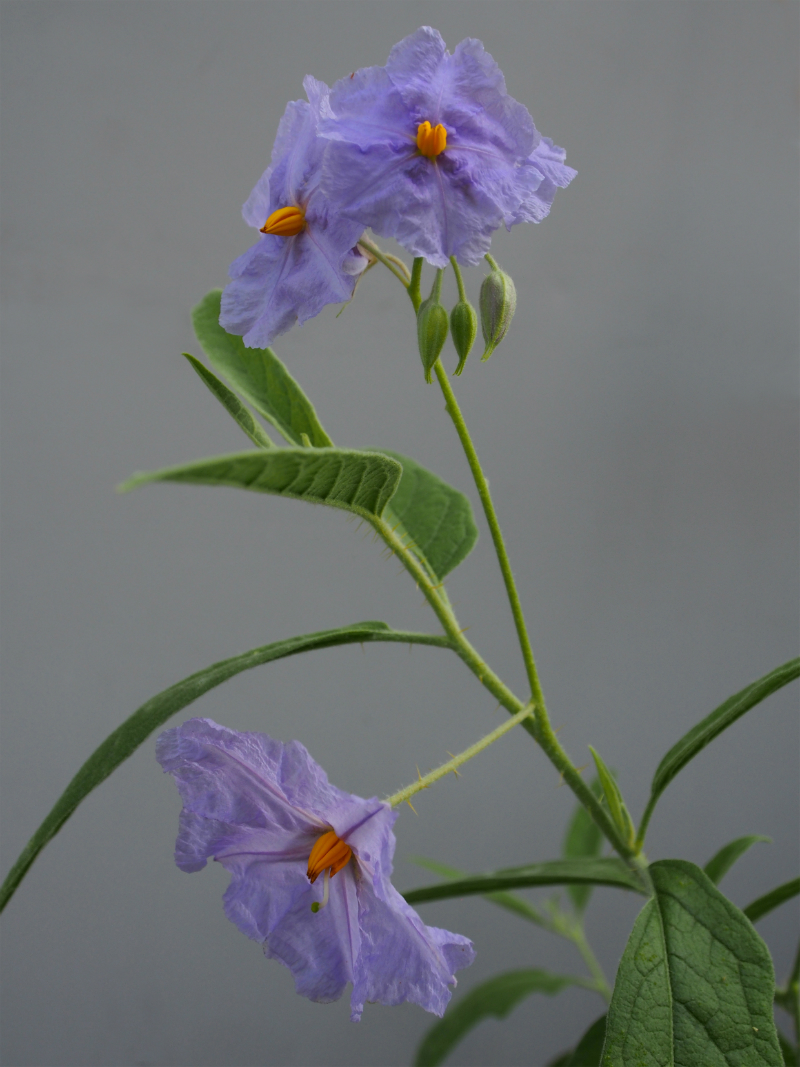'The Martian' Botanist Inspires Newfound Plant Species Name

Actor Matt Damon may have only been playing a botanist in the 2015 film "The Martian," but his scientific turn in the hit movie has inspired real-life researchers. They recently named a new Australian plant species after his character.
In "The Martian," Damon plays a fictional NASA astronaut who accidentally gets left behind on Mars when a mission goes terribly wrong. The intrepid botanist uses his training, skill and considerable determination, however, to survive against all odds.
Damon has already garnered a Golden Globe, a Critics' Choice Award, and the British Association for Film and Television award for Best Actor for the role, but now his character, Mark Watney, has received yet another accolade. Scientists named a new species of bush tomato Solanum watneyi, describing it in a study published online today (Feb. 25) in the journal PhytoKeys. [StarStruck: Species Named After Celebrities]
"Something extraordinary"
Chris Martine, co-author of the study was thrilled to see the Mark Watney character confront danger and adversity, and triumph by using science, proving that "botanists can be cool, too," Martine wrote in a blog post in September 2015. Martine is a biology professor at Bucknell University in Lewisburg, Pennsylvania.
The researcher was so moved by Damon's portrayal that not only did he decide to name the new bush tomato species after Watney, but he also extended an invitation to Damon on behalf of the Botanical Society of America, inviting the actor to join their ranks as an honorary member.
"Scientist heroes are already unusual in Hollywood," Martine wrote, "but a space-deserted protagonist who studies plants as a profession is something extraordinary."
Get the world’s most fascinating discoveries delivered straight to your inbox.
All in the family
Bush-tomato shrubs are widespread in Western Australia, growing in arid regions and producing large, purple flowers and a round, yellowish fruit that measures about 0.8 to 1.2 inches (2 to 3 centimeters) in length.
Martine pointed out that Solanum watneyi was an especially appropriate name choice, because the plant is a member of the same genus as the potato plant that Watney coaxed into growing on Mars: Solanum tuberosum.
Andy Weir, author of the novel "The Martian" (Crown, 2014), on which the movie was based, and creator of the Mark Watney character, said he agreed wholeheartedly with Martine's decision.
"What higher honor could a botanist like Watney ask for than to have a plant named after him?" Weir wrote on his Facebook page. "And to have it be a relative of the potato as well? Perfect!"
Follow Mindy Weisberger on Twitter and Google+. Follow us @livescience, Facebook & Google+. Original article on Live Science.

Mindy Weisberger is a science journalist and author of "Rise of the Zombie Bugs: The Surprising Science of Parasitic Mind-Control" (Hopkins Press). She formerly edited for Scholastic and was a channel editor and senior writer for Live Science. She has reported on general science, covering climate change, paleontology, biology and space. Mindy studied film at Columbia University; prior to LS, she produced, wrote and directed media for the American Museum of Natural History in NYC. Her videos about dinosaurs, astrophysics, biodiversity and evolution appear in museums and science centers worldwide, earning awards such as the CINE Golden Eagle and the Communicator Award of Excellence. Her writing has also appeared in Scientific American, The Washington Post, How It Works Magazine and CNN.



